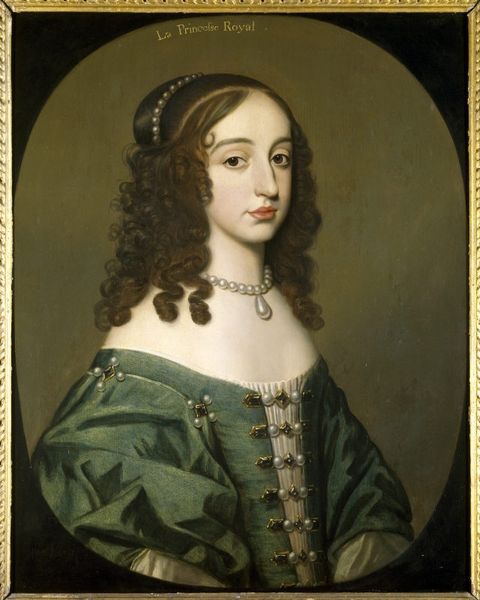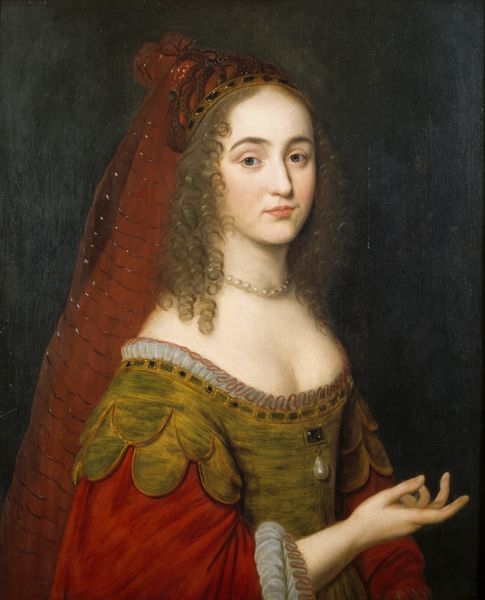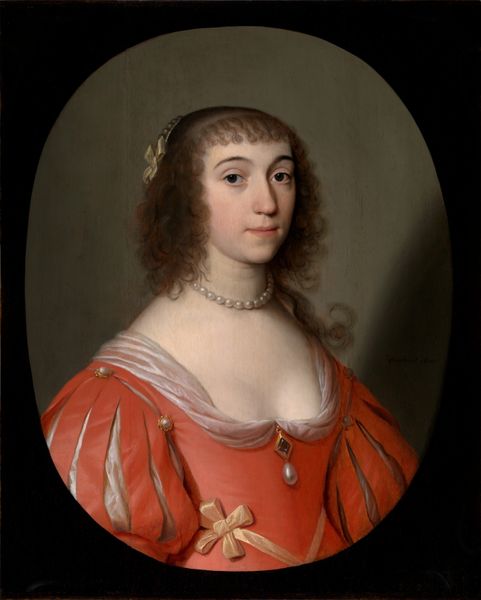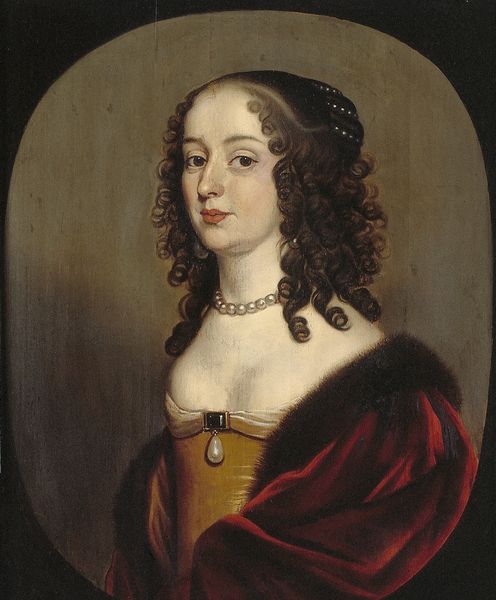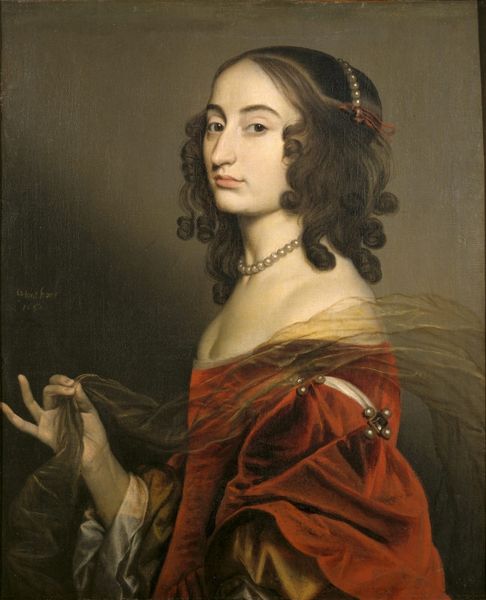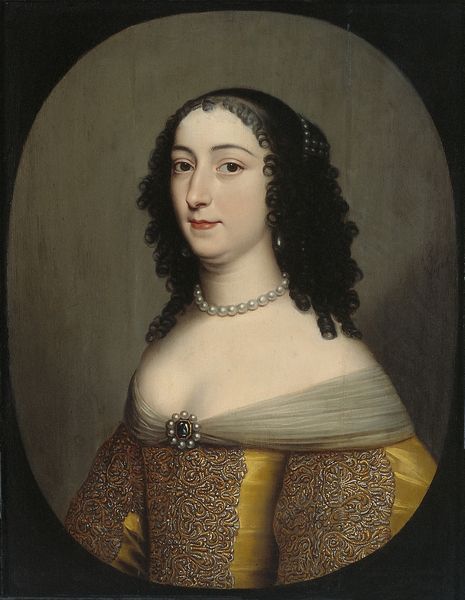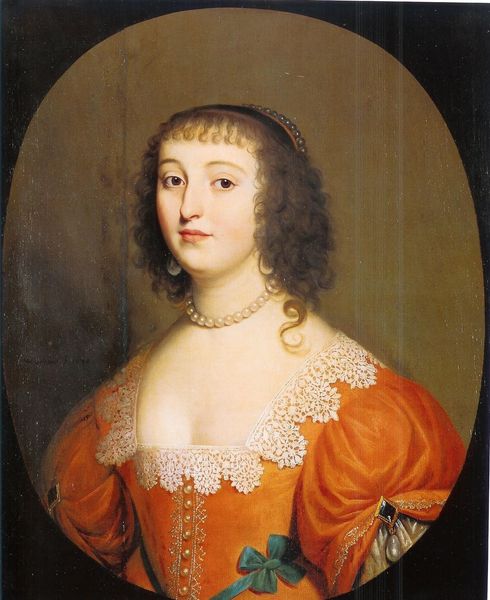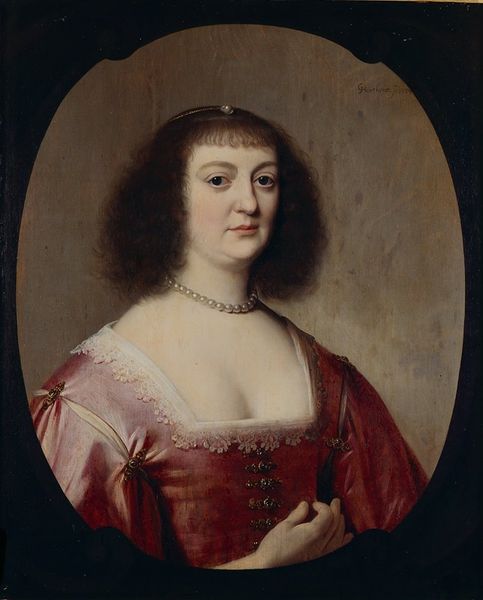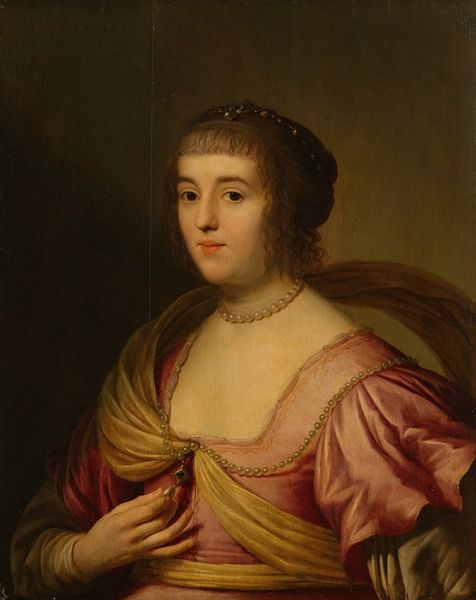
painting, oil-paint
#
portrait
#
baroque
#
painting
#
oil-paint
#
history-painting
Copyright: Public domain
Editor: So, here we have Gerard van Honthorst’s “Elisabeth Palatine,” from 1642. It's an oil painting, and my first impression is of its stillness, like a captured breath. How would you interpret this work? Curator: It's like peering into another world, isn't it? For me, this portrait sings a quiet song of power, yes, but also vulnerability. The sitter, Elisabeth, seems caught between worlds - the grand stage of royal life and the intimate sphere of personal reflection. Doesn’t her gaze seem to be asking a question of us? Editor: I hadn't considered that sense of asking. I was mostly struck by the details, like the way the light catches the pearls. How much does her status influence the artist’s choices, do you think? Curator: Hugely! Honthorst was a master of Baroque portraiture, and his patrons often wanted to project an image of authority and wealth. But here, even amidst the velvet and jewels, there's a softness. I find it more intimate than performative, almost melancholic. Maybe he caught a glimpse of her true spirit. It's always in the eyes. Editor: The idea of capturing the true spirit is so lovely! It really does give the painting a new layer of meaning for me. Curator: Right? I think sometimes art is a sneaky way of telling stories, maybe even fairytales, beneath the veneer of "history." And each time we look, we write a new chapter. I’ve really enjoyed chatting with you today! Editor: Absolutely! This was extremely interesting, and your perspective is really great. Thank you.
Comments
No comments
Be the first to comment and join the conversation on the ultimate creative platform.
